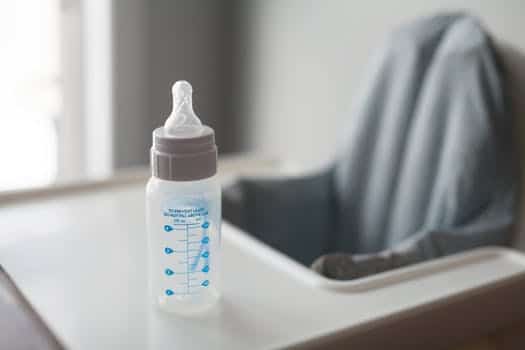Many women return to work after having their babies, and because they want to continue breastfeeding, they express milk and store it. After expressing the milk, it can be used immediately, stored in the refrigerator or frozen.
Freshly pumped milk is obviously the easiest option if this is feasible. It can safely stand at room temperature for four to eight hours. The problem arises when you have to work, and you need to refrigerate or freeze your milk. In this case, it has to be warmed up before your baby is fed.
Storage of left-over breast milk can be an issue due to the bacteria that enter it from the baby’s mouth during feeding. Breast milk can be refrigerated or frozen and reheated, but every time it is reheated, it loses some of its nutritional value.

Thawing refrigerated breast milk
You can store your precious breast milk in the refrigerator without any problems for about a week. If you want to heat it up and maintain its nutritional value, you need to do it slowly and evenly.
There are various ways to warm the milk. You can run it under warm water in the sink, use a bottle warmer or place it in a container of warm water. Swirl it gently to distribute the fat that has separated on refrigeration and make sure it is evenly warm.
Thawing frozen breast milk
It is possible to freeze breastmilk for some time. The amount of time it can be stored will depend on various factors such as the size and type of freezer. You can put the frozen milk into the refrigerator the day before you want to use it so it can thaw slowly.
If you need to use the frozen milk straight away, put it under warm running water or place in a bowl of cool water to thaw it. The cold temperature of the milk changes the water temperature in the bowl, so you need to check it from time to time and change it to more lukewarm water.
Thawing breastmilk on the stove is possible, but you will have to check constantly to make sure it does not overheat. You should never heat up breastmilk in a microwave because it’s far too easy to overheat it or create ‘hot spots’ that burn your baby’s mouth.

What temperature is best for breastmilk?
Some babies will take unheated breastmilk which makes things easier for moms, but most of them prefer warm milk. Warm milk is soothing and comforting for them. Test a drop on your inner wrist to find out whether it’s an appropriate temperature. If you don’t feel any change when the milk touches your wrist, it is just right. If it still feels too cold, continue to warm it up and if it is too warm, let it stand for a short while before giving it to your baby.
Is there a limit to how many times you can reheat breast milk?
Bacteria can form in breast milk when saliva gets into it during feeding. This is why it needs to be refrigerated as soon as possible if unused. You cannot just keep refrigerating breastmilk and reheat it.
Every time you heat up breast milk, some of its beneficial properties are lost, so it’s best to heat up only what your baby is likely to drink. Fresh breastmilk is obviously best at fighting bacteria, followed by milk that has been refrigerated and then milk that has been frozen.
When your baby does not finish its milk, it’s usually safe to refrigerate it soon after the food and reheat it one more time.
Can breast milk go bad?
The length of time breastmilk can be kept at room temperature once the baby has been fed depends on various factors such as the temperature and the initial bacterial load in the milk. No studies have yet been done about the safety of using unfinished milk. Experts tend to agree, based on related evidence, that remaining milk should be discarded within an hour or two after the baby is finished feeding.
Breastmilk can go bad, just like regular milk. Many moms will smell it or taste it to see whether it is still good. It cannot hurt the child if it is bad but it is unpalatable and lacking in nutritional value.
